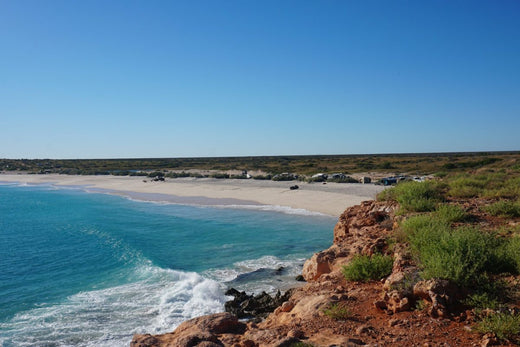Do you enjoy recreating in the great outdoors? Do you love going camping? Do you want to know how you can look after the environment? Then keep reading…
The first thing I want you to do is think about somewhere in nature that is special to you… It could be the beach, your families farm house, a local bush reserve or a tropical paradise…

Sarah’s special place in nature

Keelan’s special place in nature
Think about why this place is so special to you… what do you love most about this place? What do you do while you are at this place? Do you go to this place in nature alone or do you enjoy spending time there with loved ones?
Close your eyes and paint a picture of this place in your mind…
Now, imagine visiting this place and seeing it covered in litter… toilet paper blowing around, a bag of rubbish left behind, a coke can thrown out the window of a car and now rolling around… How does this make you feel? Frustrated? Annoyed? Disappointed? Sad?
Leave No Trace is a set of seven principles to help people make good decisions about protecting the special places they visit in the outdoors. Although you might look after nature when you visit, some people don’t…
Thats why it’s important that we share the 7 Leave No Trace Principles!
The 7 Leave No Trace (LNT) Principles
- Plan Ahead and Prepare
- Travel and Camp on Durable Surfaces
- Dispose of Waste Properly
- Leave What You Find
- Minimise Campfire Impacts
- Respect Wildlife
- Be Considerate of Your Hosts and Other Visitors
Nature Activities you could do with yourself or your kids/grandkids/friends:
Activity: Sound Map
Concepts, skills, and qualities taught: Auditory awareness, serenity
Materials needed: Paper, pencil(s)
- Mark an X in the middle of your page.
- This X represents where you are sitting.
- Listen quietly to the noises surrounding you.
- Each time you hear a sound, make a mark on the paper to represent the sound. The location of the mark should indicate the direction and distance of the sound from your seat.
- E.G. A few wavy lines could represent a gust of wind, or a musical note could indicate a singing bird.
- Making simple marks keeps the focus on listening rather than drawing.
Sound Map Debrief:
- What sounds were the most familiar to you?
- What sound had you never heard before? Do you know what made the sound?
- What sound did you like best? Why?
- Was there any sounds that disturbed the peace?
Sitting quietly—listening to the soothing voices of nearby trees, birds, and rustling grasses—calms us and deepens our appreciation for the life around us. Sound Map is an excellent activity for instilling greater awareness of one’s surroundings.
Books/Films we recommend:
The Lorax (Book & Movie)
David Attenborough – A Life on Our Planet


